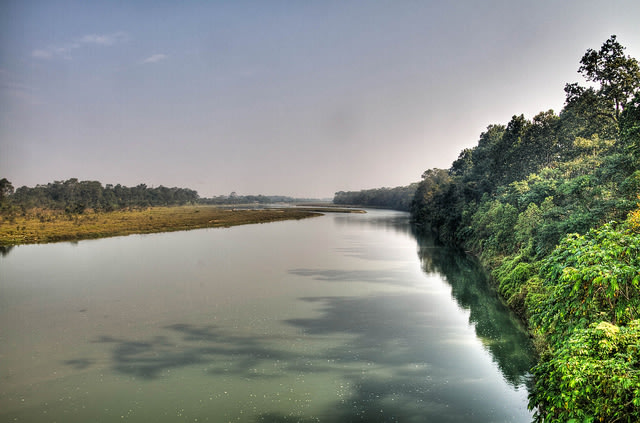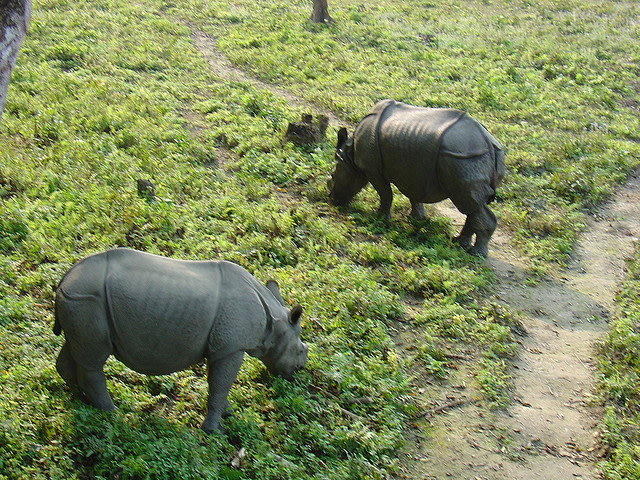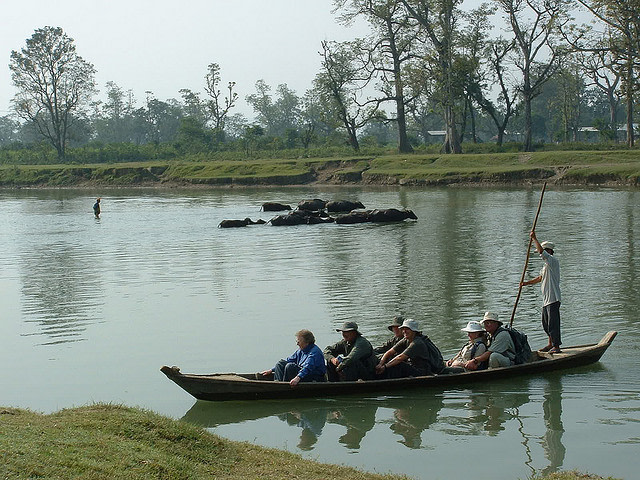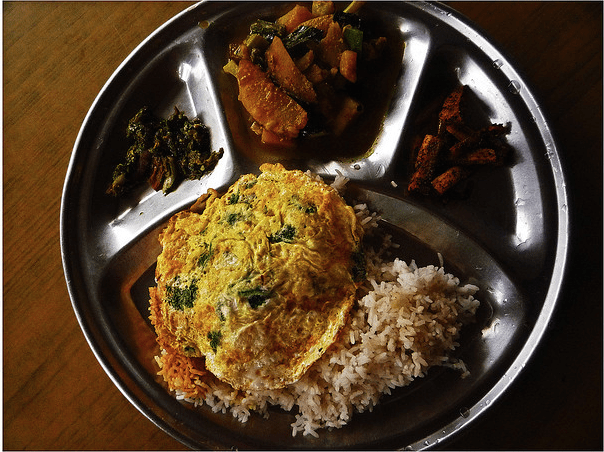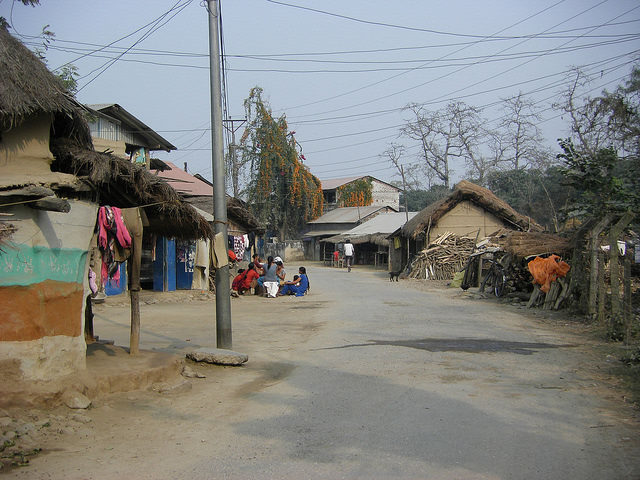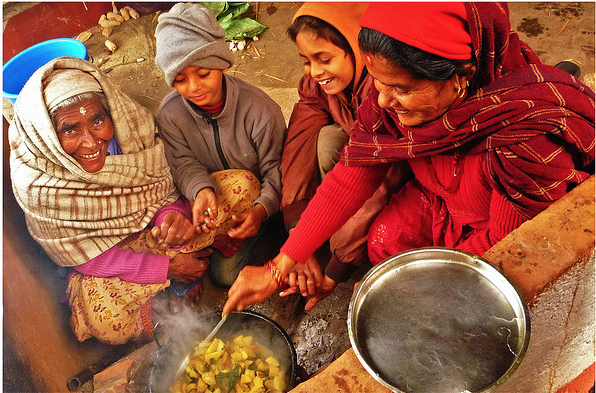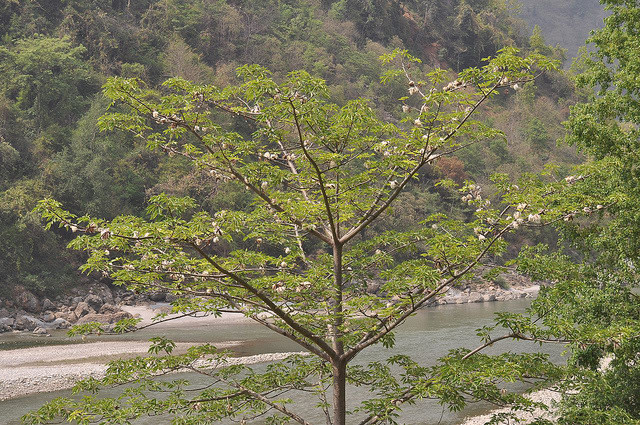| 8 mins read
By Julie Jennings
The Chitwan District of Nepal lies in the southern central portion of Nepal, among the gentle foothills of the mighty Himalayas, an area known as the Inner Terai. Covering an area of 856 square miles, this agriculturally productive valley is home to a magnificent national park and a multitude of wildlife and flora. The Rapti and Narayani Rivers run through Chitwan District, and marshes, grasslands and dense jungle cover the majority of the land in this area.
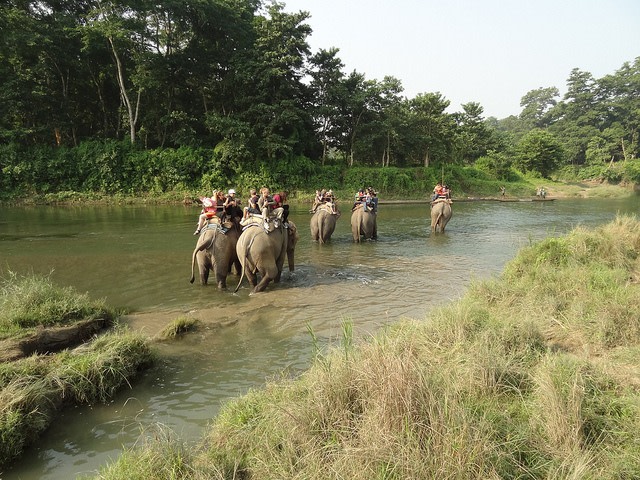
A Brief History of Chitwan
The history of Chitwan tells a tale of both recklessness and preservation. For many years, this wild, remote land was barely touched by the feet of man. Animals roamed the jungles and flourished in the untouched grasslands and forests. By the late 18th century, royal hunters journeyed to the Inner Terai, and Chitwan specifically, to hunt the large game found there. Rhinoceroses, tigers and leopards were valued for sport and prestige. According to naturalists, over 800 rhinos lived in the Chitwan area in 1950. Farmers in search of fertile land moved into the lower hills and poaching soon followed. By the 1960s the rhinoceroses numbers had dropped severely to less than 100. By the late 1950s, conservation laws were put in place, but it was the work of Edward Pritchard Gee, an Anglo-Indian conservationist and tea planter, that pushed preservation to new heights. Using surveys in 1959 and 1963 he was able to demonstrate the declining rhinoceros population and deforestation of Chitwan. The end result came in 1973 when the Chitwan National Park was established, the first of what are now nine national parks in Nepal.
Chitwan National Park
Chitwan National Park is one of Asia’s best-preserved conservation areas and is lauded for keeping the animals and their habitats intact. Only one half-hour by plane from Kathmandu, this national park of the Inner Terai lowlands consists of Sal forests, tall grasslands, hills, lakes and flood plains of the Narayani, Rapti and Reu Rivers.
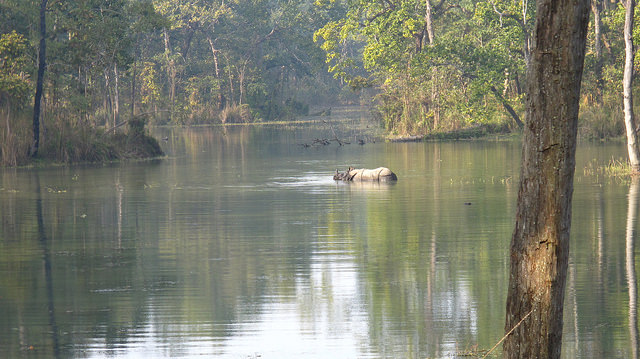
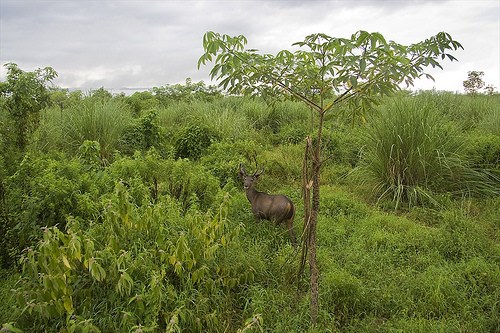
More Places to Visit in Chitwan
Upardanghari Fort, located in the old headquarters of the Chitwan District, was built in the 17th century by Satrubhanjan Shah, the son of Prince Bahadur Shah, to defend the newly founded Kingdom. Its scenic location on top of a hill provides visitors a nice view of the area.
The Kasara Durbar Palace was once part of the Rana Regime and is located inside Chitwan National Park. There is a museum here as part of the park’s main offices.
In the spring season, the Diyalo Bangala Palace was used by the Shah Dynasty of Nepal. However, it was built by King Mahendra Bir Bikram Shahdev to rest during winter season. It can be found on the banks of the Narayani River in Bharatpur Municipality ward no. 2.
Food and Drinks
Dal bhat, a mixture of rice, lentils and sometimes curry seasoning, is the staple food of Nepal. In Chitwan, Taas has become very popular. Similar to the kabob of the Middle East, Taas is often prepared in Chitwan with spicy fried goat meat. Sukuti is dried meat, almost like jerky, using a variety of local meats. Sukewa is a roasted meat dish made with fresh herbs and local spices and cooked over an open fire. Newa Cuisine from the Kathmandu region is popular in the area and comes from the cooking of the Newar people. Newa Cuisine is a more elaborate style of cooking, with a broader range of ingredients grown in the fertile Kathmandu area. One of the most popular foods in Nepal, Momo is actually a Tibetan-style dumpling with Nepali spices. It was originally filled with buffalo meat, but goat, chicken and vegetarian Momo are also prepared.
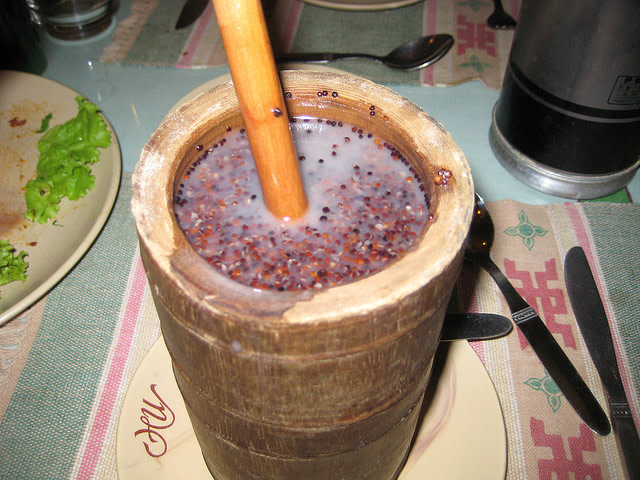
Getting to Chitwan and Around the Area
International flights arrive in Kathmandu at Tribhuvan International Airport. Once in Kathmandu, a short flight can be booked to Bharatpur Airport just several miles from Chitwan National Park, or a bus or minivan can be hired for the four- to five-hour ride to Sauraha. From Bharatpur Airport too there is a short taxi ride to Sauraha. Travel into and around Chitwan National Park is done by 4x4 jeep or on foot. The dense jungle and marshy area is not conducive to other types of vehicles. Sauraha is a small town outside of the national park, convenient for lodging and food, as well as transport to other areas of Nepal. Here, visitors can walk on foot, take jeeps, or ride on cycle rickshaws for a fee.
Tropical Climate Can Mean Monsoon Season in Chitwan
The tropical climate in Chitwan equates to humidity, heat and precipitation. Its three distinct seasons are: summer from March through June with dry weather and high temperatures, the hottest month being May; monsoon as early as late May and lasting through September; and winter from October to February, with cold winds blowing from the mountainous north, cooling the otherwise warm temperatures.
Rains in the monsoon season usually come with high winds, thunder and lightning. Although the showers last for short spans, their frequency and volume can create a deluge. In these three months, more than 80 percent of the total annual rainfall occurs. Monsoon season is not the best time for tourism, since many times the roads are flooded and rivers swell to dangerous levels. Winter is actually the best time for travelers due to the moderate temperatures, clear skies and lush blooms on the trees toward the end of winter. One such bloom is the “flame of the forest” on the Palash Tree, and the other well-known blossom is the crimson-colored Silk Cotton Tree.
(Julie Jennings enjoys writing about people she’s met, places she’s visited and experiences she’s had. She lives with her two children in Southern California and dreams of taking her next trip.)
Image Details and Licenses: https://flic.kr/p/dWywrH (Matt Werner, CC BY-NC-SA 2.0), https://flic.kr/p/aTwvdn (Ronald Woan, CC BY-NC 2.0), https://flic.kr/p/5VyfXt (amanderson2, CC BY 2.0), https://flic.kr/p/r3LtnC (Stefanos Nikologianis, CC BY 2.0), https://flic.kr/p/6Y6gCs (Bas Wallet, CC BY-SA 2.0), https://flic.kr/p/4r1woA (Chris Hartford, CC BY-NC 2.0), https://flic.kr/p/6Jx1ke (symmetry_mind, CC BY-SA 2.0), https://flic.kr/p/3XNXXN (tvancort, CC BY-NC-SA 2.0), https://flic.kr/p/9n4TaC (gordontour, CC BY-NC-ND 2.0), https://flic.kr/p/6JAoKE (symmetry_mind, CC BY-SA 2.0), https://flic.kr/p/eidbrn (Plant.Hunter, CC BY-NC-SA 2.0)


